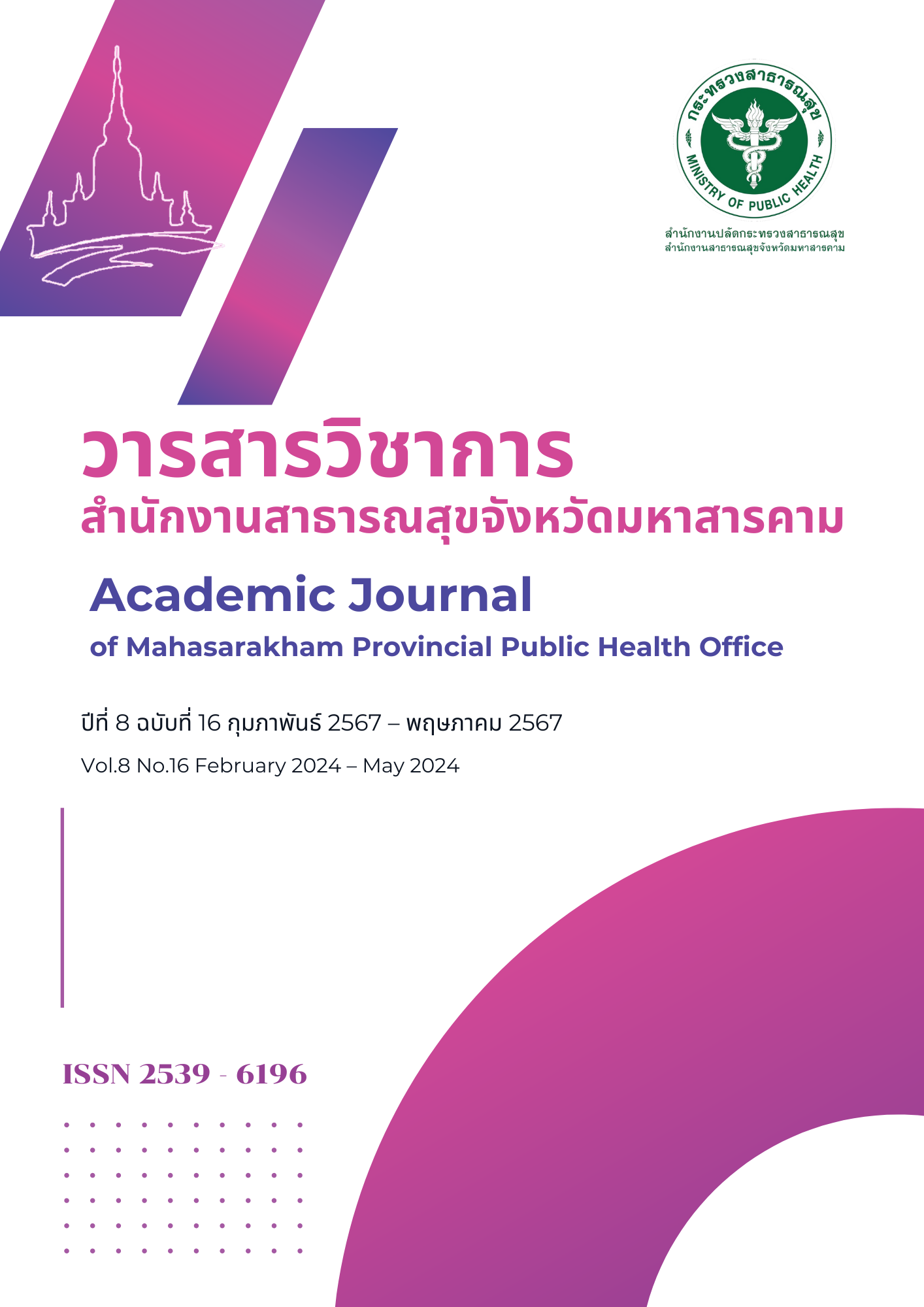Nursing care of patients with septic shock : case study
Abstract
Abstract
The purpose of this case study is to study the nursing of patients with septic shock through the application of knowledge and practice. How does Nakhon Ratchasima collect medical records from patients at Hospital By interviewing patients and their relatives, a three-stage study was conducted on patients: Receiving stage, continuous stage, and sales stage. Analyze data based on Gordon's nursing theory, nursing process, and 7 nursing methods as a framework for nursing issues. 1) Shock 2) Hypoxia
3) Fever 4) Excessive water 5) Abdominal pain 6) Anxiety towards the disease 7) Lack of understanding of the disease.
A study has found that a 64 year old Thai male patient suffers from congenital diseases, with gout doctors stopping medication for 2 years. He weighs 55 kilograms, is 165 centimeters tall, and has a body mass index of 20.20. Kg/m2 came to the hospital due to symptoms such as fever, intravenous infusion, lower tongue and abdominal pain, redness of the throat, and fatigue. First V/S hour body temperature 38.9 ° C, blood pressure 82/54 mm.Hg, pulse 92 times/minute, breathing 20 times/minute, O2 satellite 94% room air, SOS 5 points. The doctor diagnosed streptococcus suis septicemia. Hospitalization treatment was cefotaxime 2 grams of venous outer diameter. 14 days Hematological septic shock is a complex emergency situation, and as age increases, the likelihood of mortality and complications increases. The original health of patients, the source of infection, and the type of infection that leads to it, despite the continuous development of blood infection care systems. The conclusion drawn from the case study is that there are clear guidelines for evaluating, monitoring, and monitoring symptoms and symptoms, as well as reporting standards for doctors in patients with blood infection shock. Make nursing accurate, fast, and standardized to ensure patient safety.
Keywords : Nursing, bloodstream infection, shock


